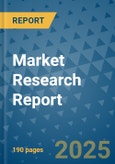This market's strong growth outlook is supported by a surge in consumer demand for minimally processed, whole-grain breakfast products that align with evolving clean-label and nutrition transparency standards. New FDA regulations have updated the definition of “healthy” to include specific whole-grain minimums while capping added sugars, saturated fats, and sodium, which strongly supports the positioning of unroasted cereal flakes. With global cereal grain output consistently exceeding 3 billion metric tons annually, the industry benefits from stable input supply chains and scalability, allowing producers to prioritize whole grain sourcing and transparency. Consumers are favoring cereals with recognizable, limited ingredients and reduced processing, driven by shifting dietary awareness and updated government nutrition recommendations that emphasize fiber and whole grains. This has led to increased product innovation that includes functional enhancements and nutrient fortification, appealing to health-conscious shoppers seeking both convenience and nutrition. As dietary standards evolve, manufacturers are aligning more closely with health agencies to ensure their offerings meet expectations for cleaner, simpler, and more wholesome food choices.
The organic unroasted cereal flakes segment will grow at a CAGR of 8.9% through 2034, propelled by streamlined certification processes and strong links to large-scale cereal production. Regenerative agriculture is also emerging with an 11% CAGR, as brands work with advocacy groups to establish farm-level transition pathways and reliable verification systems. These regenerative claims are gaining traction in specialty retail settings, helping suppliers secure longer-term agreements due to improved input traceability and sustainability documentation.
The ready-to-eat unroasted flakes segment held 60% share and is expected to grow at a CAGR of 6.9% through 2034. These cereals are popular due to their convenience, well-established consumer habits, and continuous product innovations that address evolving preferences. They cater to a busy consumer base looking for nutritious and easy-to-prepare options, often targeting premium segments with clean-label and functional claims aimed at wellness-driven individuals.
North America Unroasted Cereal Flakes Market held a 33% share and generated USD 3.9 billion in 2024. Growth in this region is fueled by broad consumer awareness of whole grain benefits and a mature retail infrastructure. Updated U.S. labeling rules and reduced sugar mandates within institutional meal programs have created favorable conditions for cereals with cleaner profiles. In Canada, while competition from processed cereals and snack bars remains high, organic brands are seeing greater acceptance due to expanded premium shelf space and more accessible certification processes. Brands are placing greater focus on sustainable packaging and verifiable label claims to gain consumer trust and stand out in a competitive market.
Key companies in the Unroasted Cereal Flakes Market are Nature’s Path Foods, Post Consumer Brands, Food For Life Baking, Maselis N.V., Nestlé (Cereal Partners Worldwide), Small Valley Milling, Bob's Red Mill, PepsiCo/Quaker Oats, Hearthside Food Solutions, Organic Milling, King Arthur Baking, General Mills, Ritika’s Global Grains, Kellogg Company, and bio-familia (Swiss). Leading players are focusing on expanding their product portfolios to include clean-label, organic, and whole-grain cereals to align with modern health standards and dietary regulations. Companies are adopting USDA organic certification and leveraging federal reimbursements to offset costs, accelerating entry into premium segments. Many are increasing transparency across their supply chains to support regenerative agriculture claims and traceability, which helps build long-term retail partnerships. Brands are innovative with functional ingredients like fiber, protein, and probiotics while using fewer additives.
Comprehensive Market Analysis and Forecast
- Industry trends, key growth drivers, challenges, future opportunities, and regulatory landscape
- Competitive landscape with Porter’s Five Forces and PESTEL analysis
- Market size, segmentation, and regional forecasts
- In-depth company profiles, business strategies, financial insights, and SWOT analysis
This product will be delivered within 2-4 business days.
Table of Contents
Companies Mentioned
The companies profiled in this Unroasted Cereal Flakes market report include:- Kellogg Company
- Nestlé (Cereal Partners Worldwide)
- General Mills
- PepsiCo/Quaker Oats
- Post Consumer Brands
- Nature's Path Foods
- Maselis N.V.
- Bob's Red Mill
- Bio-familia (Swiss)
- King Arthur Baking
- Hearthside Food Solutions
- Organic Milling
- Small Valley Milling
- Ritika's Global Grains
- Food for Life Baking
Table Information
| Report Attribute | Details |
|---|---|
| No. of Pages | 190 |
| Published | October 2025 |
| Forecast Period | 2024 - 2034 |
| Estimated Market Value ( USD | $ 5.5 Billion |
| Forecasted Market Value ( USD | $ 10.7 Billion |
| Compound Annual Growth Rate | 6.9% |
| Regions Covered | Global |
| No. of Companies Mentioned | 16 |









